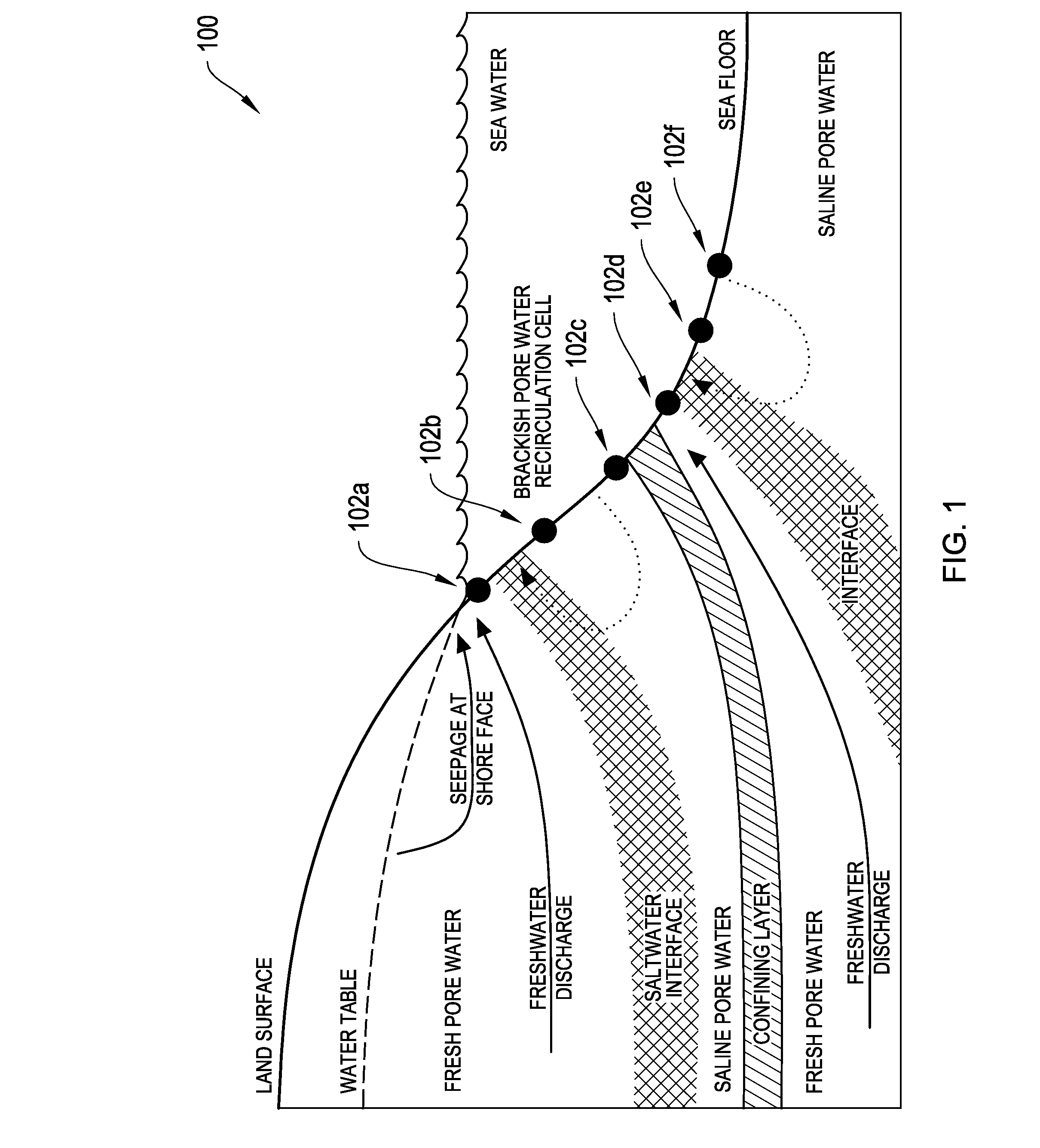Systems and methods for intercepting submarine groundwater for desalination
a technology of submarine groundwater and desalination system, which is applied in the direction of liquid/fluent solid measurement, fluid speed measurement, instruments, etc., can solve the problems of increasing the economic burden of satisfying the water demand, affecting the development speed of the project, so as to reduce the energy needed
- Summary
- Abstract
- Description
- Claims
- Application Information
AI Technical Summary
Benefits of technology
Problems solved by technology
Method used
Image
Examples
Embodiment Construction
[0021]To provide an overall understanding of the systems and methods described herein, certain illustrative embodiments will now be described, including a method and system for intercepting submarine groundwater discharge to be used as a supply source for desalination processes. In particular, a network of strategically-placed seepage meters is described, along with an example of a seepage meter that may be used in the network. However, it will be understood by one of ordinary skill in the art that the systems and methods described herein can be adapted and modified for other suitable applications and that such other additions and modifications will not depart from the scope hereof.
[0022]FIG. 1 is a depiction from the side of a network of seepage meters 100 deployed to detect and monitor submarine groundwater discharge according to an embodiment of the invention. Submarine groundwater discharge (SGD) is the flow of water from coastal aquifers into the ocean. Most SGD derives from in...
PUM
| Property | Measurement | Unit |
|---|---|---|
| internal volume | aaaaa | aaaaa |
| internal volume | aaaaa | aaaaa |
| internal volume | aaaaa | aaaaa |
Abstract
Description
Claims
Application Information
 Login to View More
Login to View More - R&D
- Intellectual Property
- Life Sciences
- Materials
- Tech Scout
- Unparalleled Data Quality
- Higher Quality Content
- 60% Fewer Hallucinations
Browse by: Latest US Patents, China's latest patents, Technical Efficacy Thesaurus, Application Domain, Technology Topic, Popular Technical Reports.
© 2025 PatSnap. All rights reserved.Legal|Privacy policy|Modern Slavery Act Transparency Statement|Sitemap|About US| Contact US: help@patsnap.com



